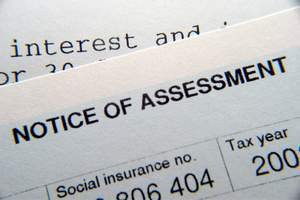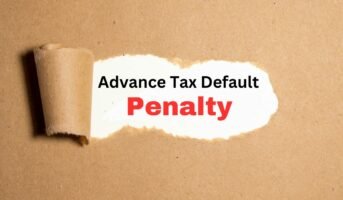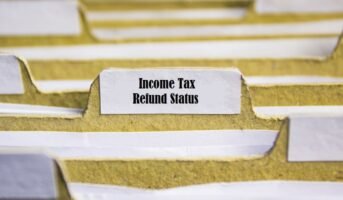The term income tax is not defined under the Income Tax Act, 1961. However, the two terms have been separately defined.
Income is defined under Section 2(24) of the Income Tax Act 1961, and the term tax is defined under Section 2(43) of the ITA. These definitions simply mean that income tax is an amount payable/paid by an assessee to the government. An assessee is an Individual/HUF/Company/AOP/BOI/Trust/Firm or LLP/Local Authority who is required to pay tax as per the Income Tax Act, 1961.
This amount payable/paid depends on the income of the assessee and the relevant tax slabs. Taxpayers are required to provide details of their income to the income tax department. This is done by filing the income tax returns of the relevant financial year with the IT department. Once filed, the succeeding step is the processing of this return by the department. Here, the correctness of the return is examined. This process of examining the filed returns by the department is known as assessment. This includes re-assessment and best judgement assessment under Section 144.
See also: Difference between financial year and assessment year
What is an income tax assessment order?
An income tax assessment order is an order issued by the assessing officer of the IT department to an assessee. This order provides a detailed computation of the amount that is refundable or payable by the assessee for any previous year. An assessment order is the basis or the pillar of all proceedings under the Income Tax Act. Therefore, it is of great importance that the assessing officer is provided with all the material necessary for the framing of a judicious assessment order.
Under the Income Tax Law, four major assessments exist:
- Assessment under section 143(1) – This is a summary assessment without calling the assessee.
- Assessment under section 143(3) – This is a scrutiny assessment.
- Assessment under section 144 – This is a best judgement assessment.
- Assessment under section 147- This is an income escaping assessment.
This issuance of such an order takes place when:
- An assessee files ITR for a specified period when the time limit for filing the return is over.
- The assessing officer is not satisfied with the filed ITR for reasons as stated in the assessment order issued.
How is an income tax assessment order generated?
- The assessee is first required to file the income tax return for the relevant financial year.
- The assessing officer looks into the filed income tax return and examines its correctness. For instance, the officer would draw a comparison of the filed income tax return with the books of accounts of the assessee. The assessing officer draws a comparison between the net income as per the income tax return against the net profit in the books of accounts.
- If the assessing officer is not satisfied with the correctness of the filed return, a notice requesting clarity on the same is issued to the assessee. Initially, the assessing officer usually requests for submission of various documents to support the stated amount in the filed returns.
- If the assessing officer is still not satisfied with the submissions made by the assessee for reason(s) as mentioned in the show cause notice, an assessment order is issued to the assessee.
- If the assessee is aggrieved by the order of the assessing officer, then an appeal against the same can be filed before the concerned tax authority by making the necessary submissions in the form as prescribed in the Income Tax Act, 1961. This appeal must be filed within the time frame prescribed in the Act, and necessary payments must be initiated towards the same.
Income tax assessment order: Method of accounting
The net profit computed for the purpose of filing income tax returns differs from the net profit computed in the books of accounts, which is in accordance with the Indian Accounting Standards.
Section 145 of the Income Tax Act focuses on the method of accounting. This section states that the determination of the assessee’s income is required to be in line with the cash or mercantile system of accounting regularly employed by the assessee. Section 145(3) establishes that where the assessing officer is dissatisfied with the correctness or completeness of the accounts, or if the accounting standards have not been complied with, the officer may make the best judgement assessment as in section 144.
Service of notice
The Income Tax Act of 1961 lays out in Section 282 how notices are to be served. The Central Board of Direct Taxes has the authority to approve the use of postal or courier services, as well as electronic means in accordance with the Information Technology Act. Additionally, the Central Board of Direct Taxes may also allow for other forms of notice delivery as it sees fit. Understanding the ‘Service of notice’ is crucial with respect to the assessment order.
Income tax assessment order: Who is liable to receive it?
Any assessee who has filed income tax returns for the previous financial year and whose returns are not satisfactory to the assessing officer is liable to receive such an order.
Income tax assessment order: What is the time limit for the issuance of this order?
The income tax department can issue this order between nine months to not beyond 10 years from the filing of the return. This time limit depends on the governing section under which the assessment order is issued.
Income tax assessment order: How to obtain an assessment order from the income tax portal?
Once the income tax return is processed, the taxpayer receives an intimation on the registered email ID.
The following are the steps to resend the intimation order:
Step 1: Access the e-filing portal by logging in at Incometax.gov.in.
Step 2: Navigate to the ‘My Account’ menu, select ‘Service Request’ and choose ‘New Request’ as the request type. Then, select ‘Intimation u/s 143(1)154/16(1)/35’ as the request category and click on ‘Submit’.
Step 3: Enter the following details:
- Return Type
- Assessment Year
- Category (Intimation u/s 143(1))
- Sub Category(if applicable)
Step 4: Click ‘Submit’
Step 5: To View the status of the submitted form:
- Access the e-Filing portal by logging in at gov.in.
- Navigate to the ‘My Account’ menu, select ‘Service Request’ and choose ‘New Request’ as the request type. Then, select ‘Intimation u/s 143(1)154/16(1)/35’ as the request category and click on ‘Submit’.
Income tax assessment order: What to do on receipt of this order?
In case a taxpayer receives an assessment order issued by the IT department, it is preferable to contact their respective chartered accountant to provide guidance on the matter.
How to download income tax assessment order?
- Visit the official e-filing website
- Go to ‘My Account’ section, choose ‘Service Request’. Now, click on ‘New Request’ as the request type.
- Then, choose ‘Intimation u/s 143(1), 154/16(1)/35, as requested category. Click on ‘Submit’.
- Enter details such as Return Type, Assessment Year, Category (Intimation u/s 143(1)), Sub category if applicable, etc.
- Click on ‘Submit’
- You can view the status of the form submitted by logging into the site and go to ‘My Account’ à ‘Service Request’ à ‘New Request’.
- Choose ‘Intimation u/s 143(1)154/16(1)/35’ and click on ‘Submit’.
FAQs
What is an income tax assessment order?
An income tax assessment order is a document issued by the IT department that specifies the amount of tax that an individual or organisation is liable to pay. It is issued after the completion of an assessment of the individual's or organisation's income tax return.
What happens if I disagree with the amount of tax specified in the income tax assessment order?
If an individual or organisation disagrees with the amount of tax specified in the income tax assessment order, they have the option to appeal the order. This can be done by submitting an appeal to the Income Tax Appellate Tribunal.
How long does it take to receive an income tax assessment order?
The amount of time it takes to receive an income tax assessment order can vary depending on the complexity of the individual's or organisation's tax return and the workload of the IT department. It is generally issued within a year from the end of the financial year in which the return was filed.
Is it mandatory to receive an income tax assessment order?
It is mandatory for an individual or organisation to receive an income tax assessment order if they have filed an income tax return. If an individual or organisation has not filed a return, they will not receive an assessment order.
Housing News Desk is the news desk of leading online real estate portal, Housing.com. Housing News Desk focuses on a variety of topics such as real estate laws, taxes, current news, property trends, home loans, rentals, décor, green homes, home improvement, etc. The main objective of the news desk, is to cover the real estate sector from the perspective of providing information that is useful to the end-user.
Facebook: https://www.facebook.com/housing.com/
Twitter: https://twitter.com/Housing
Email: [email protected]











